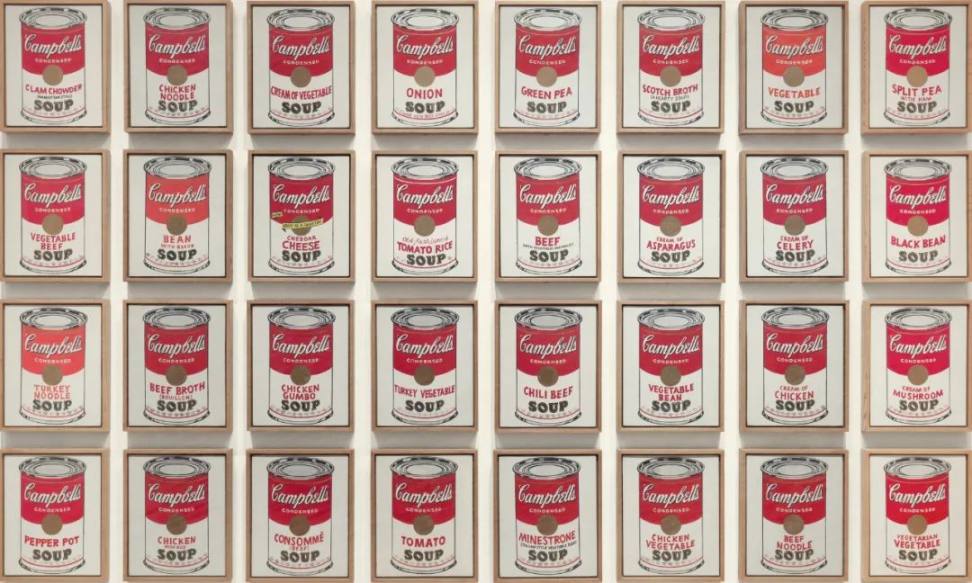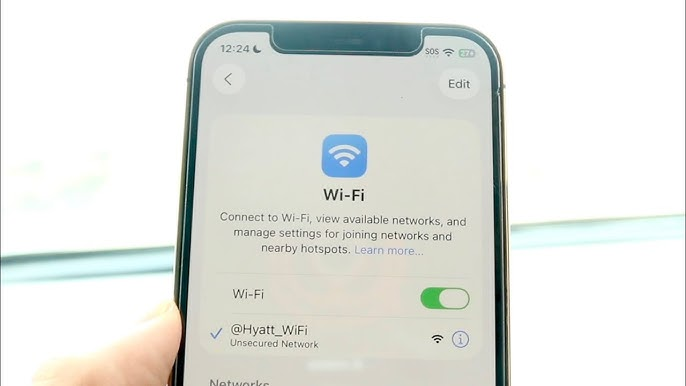NFT の簡単な歴史: 60 年にわたる NFT スターの輝かしい瞬間
オリジナル作者: 0x11
私たち一人ひとりがNFTです。私たち一人ひとりがNFTです。
NFT、今日の暗号化された世界では誰もがよく知っていると思います。この2年間、それはハリケーンのように暗号化された世界の隅々まで吹き抜け、狭い扉を突き抜けて広大な物理世界にまで到達しました。コードによってランダムに生成されたピクセル アバターは 2,370 万ドルで販売され、暗号化アーティスト Beeple の作品「Everydays: The First 5000 Days」はクリスティーズで 6,930 万ドルで販売されました。
画像の説明

NFT の過去の売上高傾向、データ ソース: NFTGo
NFTを歴史上の悪名高いチューリップバブルと混同するのは短絡的でしょう。ヘーゲルはかつて「存在することは理性的であることである」と言いました。 NFTの価値と将来性についての議論や分析は一般的になりましたが、その答えは異なります。ここでは、ソースに戻り、NFT の開発トラックをいくつかのキャラクターやストーリーと結び付けて、心の中のいくつかの疑問に答えたいと思います。
NFTの開発には明らかな段階的な特徴があります。第 1 段階では、ビットコイン誕生前の NFT の思想と概念がここで芽生えました。ビットコイン時代には、NFT は実験のための土壌を備え、初期の探求を開始しました。最後のイーサリアム時代には、NFT は本格的な生態学的爆発を引き起こしました。時間を 60 年前に戻して、私たちの物語を語り始めましょう。
芽生えた年齢
アンディ・ウォーホル: スピリチュアル・バナー
画像の説明

キャンベルのスープ缶、アンディ・ウォーホル、1962
スーパーの棚に陳列されているように、32缶がきれいに並べられたセットです。見た目はほぼ同じですが、それぞれの缶の味が違うのが特徴です。この一見「単調で退屈」な「キャンベルのスープ缶」は、20 世紀後半に芸術の旋風を巻き起こしました。作者のアンディ ウォーホルはポップアートの教皇として知られており、同様のスタイルの一連の作品で知られています。彼らは世界のトップアートホールに入り、ピカソやゴッホに匹敵する伝説的な芸術家になりました。
画像の説明

アンディ・ウォーホルの自画像、彼が予期していなかったもの 彼の死後30年以上が経ち、これらの3つの肖像画がNFTになり、最終的に280万ドルで販売されました
アンディ ウォーホルの作品を注意深く観察すると、それらすべてに共通のロジックがあることが簡単にわかります。つまり、単純な繰り返しの主題にランダムな変数が重ね合わされているということです。英国の『ガーディアン』紙はかつてこう評した、「ウォーホルは反復の力を示す専門家である。反復を通じて、彼は私たちを退屈にさせず、そのものを溶かすことなく、何かを加えている。」 彼の創作も人生も、これを実践することにある。 「私は繰り返しが好きなのです。私は20年間同じ朝食を食べています。」
この種の不謹慎かつ大胆な繰り返しは、人類の芸術史上でも類を見ないものです。彼の作品は芸術作品ではなく、工業用印刷物ではないかと疑問を抱く人もいた。なぜこの繰り返しの「版画」が人類の芸術の宝となり得るのでしょうか?
芸術は芸術であり、その価値は決して視覚的な美しさからではなく、その背後にある人間主義的な精神から生まれます。アンディ・ウォーホルの言葉:
アメリカの素晴らしいところは、最も裕福な消費者が最も貧しい消費者と基本的に同じものを買うという伝統が始まったことです。
コカ・コーラをテレビで見ると、大統領もコカ・コーラを飲み、エリザベス・テイラーもコカ・コーラを飲んでいることがわかり、自分もコカ・コーラを飲めると思います。コカ・コーラはコカ・コーラであり、街角の野郎が飲んでいるより美味しいコーラはお金で買えません。すべてのコーラは同じであり、すべてのコカ・コーラは良いものです。エリザベス・テイラーもそれを知っています、大統領もそれを知っています、ホームレスの男性もそれを知っています、そしてあなたもそれを知っています。
これは、アンディ・ウォーホルの作品によって明らかにされた産業時代の人々の一般的な精神状態です。一般人でも、自分のポケットマネーを出して、大統領や女王と同じコーラやハンバーガーを楽しむことができます。それで、何が違うのでしょうか?
きれいに並んだ32本の缶の違いが味であるように、工業化時代における大衆の小さな変動が、各人が自分になるための基礎となる。アンディ ウォーホルは、「将来、15 分間は誰もが有名になるでしょう。」 誰もが異なるため、その小さな違いを際立たせるのは、頻繁に繰り返される特徴です。
これまでのところ、主題とランダム変数を繰り返すアンディ・ウォーホルのスタイルが、FT (同種トークン) から NFT (非同種トークン) へのイデオロギーの根幹とまったく同じであることがわかりましたか。1 ビットコインは 1 ビットコインに等しいため、ビットコインを固有のものにしたい場合はどうすればよいでしょうか?
しかし、アンディ・ウォーホルの時代には、ビットコインもNFTもなく、インターネットさえも初期段階にありました。
画像の説明

2006 年に制作された、有名なストリート アーティストのバンクシーの「Fool」は、表面的で過度に膨張したアート市場を風刺することを目的としています。この絵には、混雑したオークション会場が描かれており、競売人の隣には華やかな額装された作品が置かれており、その横には「バカどもが本当にこれを買ったなんて信じられない」と書かれている。
2021年3月、ストリートアーティストのバンクシーの作品「フール」が芸術愛好家のグループによって焼かれ、その電子版がNFT化され、38万ドル(オリジナル作品の価格の4倍)で落札された。この熱狂的なファンのグループは、ソーシャルメディアで絵を燃やす様子をライブストリーミングさえしており、絵を燃やすことは「それ自体が芸術的表現である」とも述べた。
アンディ・ウォーホルの死から6年後、芸術とは何の関係もない暗号の分野で、ある思考実験がNFTコンセプトの原型をゆっくりと歴史の舞台にもたらした。
ハル・フィニー:NFTコンセプトの先駆者
1993 年、ハル フィニーという暗号学者は、サイファーパンクのメンバーに宛てた電子メールの中で、暗号通貨トレーディング カードの概念について言及しました。

フィニーさんは電子メールで次のように説明した。
私はデジタル キャッシュの売買についてもう少し考え、それを紹介する方法を思いつきました。当店では「仮想通貨トレカ」の買取・販売を行っております。暗号の愛好家は、これらの魅力的な暗号アートの例を気に入るはずです。一方向関数とデジタル署名、およびランダムなブラインド処理の組み合わせが、どのように完璧に組み合わされているかに注目してください。大切にして友達や家族に自慢するのに最適な作品です。
同氏はまた、仮想通貨トレーディングカードの希少性について、「一般的な1枚からレアな50枚、さらには非常にレアな1,000枚まで、あらゆる種類の属性がある」と述べた。
この一節は基本的に、今日のNFT、つまりデジタルコレクションのプロトタイプの概要を示しています。残念ながら、技術的な制限により、このアイデアは当時実現されませんでした。
運命がドアを閉めると、別の窓が開きます。フィニー氏の暗号分野での継続的な努力は、最終的には報われました。 2009 年 1 月 3 日、この日にビットコインが誕生したため、まったく新しい世界が開かれました。
ハル フィニーは、ビットコインへの最も初期のオープンソース貢献者の 1 人となり、ビットコインの送金を受け取った世界初の人物でもありました。彼は「サトシ・ナカモト」というペンネームでビットコインの実際の発明者の一人であるとさえ考えられていますが、この主張は彼によって否定されました。

16年前のメールにあった構想については、本人が忘れていたのか、体調の悪化で実現しなかったのかは分からない。 2009 年 10 月、ハル フィニーは筋萎縮性側索硬化症を患っていることを発表し、ついに 2014 年 8 月、彼はまさに展開しつつあった新しい世界に完全な別れを告げました。
ビットコインの世界では、新しいものと古いものがぶつかり合い、芽吹き、成長していきます。フィニーの未完成のビジョンは後にビットコインで実現しました。
ビットコイン時代
2012 年 3 月、ヨニ・アシアという男性が次のように書きました。bitcoin 2.X (aka Colored Bitcoin) – initial specs」の記事で、カラービットコインに関する彼のアイデアを紹介しています。

この記事では、カラード コインはビットコイン ネットワーク上で新しいトークンを作成することを想定しています。この斬新なアイデアはすぐにビットコイン コミュニティの人々の興味を引き付け、彼らはこのアイデアの議論と完成に参加しました。参加する人が増えるにつれて、カラーコインの機能は単純なアイデアから完全な白い紙まで拡張され続けます。後にイーサリアム帝国を建国する天才少年ヴィタリック・ブテリンもその一人でした。
完成したカラーコインの核となるアイデアは次のとおりです。
「ビットコインがトークン化され、それらのトークンが追跡できるのであれば、これらの特定のビットコインには他にも多くの用途があります。」
技術的には、カラーコインは少額のビットコインですが、さまざまな資産を表す追加データがタグ付けされており、不動産、クーポン、発行会社の株式など、さまざまな用途があります。
しかし、カラーコインの限界も非常に明白であり、それがなければ満足のいくビットコインネットワークに壊滅的なパフォーマンスプレッシャーをもたらすことになります。コミュニティ内での長期にわたる議論の中で、カラーコインは長い間実用化されるとは予想されていませんでした。
2014 年の初めまで、ロバート ダーモディ、アダム クレレンスタイン、エヴァン ワグナーという 3 人の若者が Counterparty と呼ばれるプロジェクトを設立しました。カラーコインのアイデアをいち早く実現し、ビットコイントランザクションスクリプトにデータを書き込むことで一般的なビットコインソフトウェアでは実現できない機能を完成させます。取引相手分散型取引所、XCP 契約通貨、カード ゲームやミーム トランザクションを含む多くのプロジェクトやアセットを使用して、アセットの作成をサポートします。NFTの出現を実際に促進しているのは、カウンターパーティで作成された「Rare Pepes」で、人気のミームSad FrogをNFTアプリケーションにしています。
これまでのところ、仮想通貨トレーディングカードであれ、カラーコインであれ、カウンターパーティであれ、仮想通貨の歴史の川を渡って飛び交ったこれらの名前は、何年も後に群がり、聞いたことさえなかった仮想通貨ユーザーの心の中で古代の記念碑となっています。彼らが初めてNFTに触れるのは、2017年のCryptoPunksか、その後の有名な暗号化された猫まで待たなければならないかもしれません。
イーサリアムの時代
「必要がない場合は、エンティティを追加しないでください。」 ビットコインは、オッカムのかみそりの原理をうまく適用したモデルです。ピアツーピアの電子マネー システムとして、その成果には疑いの余地がありません。オンライン世界全体を暗号化された世界にするには、一生懸命働く必要がありますが、そうでない場合は、「世界のコンピューター」になるという任務を、その後継者であるイーサリアムに引き継がなければなりません。
2013年、カラーコインに関する白書の多数の執筆者の1人であるヴィタリック・ブテリン氏は、イスラエルを旅行中にビットコインに基づくスマートコントラクトを開発しようとしている2社に出会った。 Vitalik はこのアイデアに惹かれ、当時ビットコインのスケーラビリティを研究していたマスターコイン コミュニティにアイデアを提案しました。それは、ユーザーが便利かつ迅速にスクリプトを記述できるようにする、ビットコイン用のスマート コントラクト プラットフォームを開発するというものでした。残念ながら、Vitalik 氏の提案は受け入れられませんでしたが、失望した彼は新しいスマート コントラクト プラットフォームの研究に目を向け、その年の 11 月にイーサリアム ホワイト ペーパーが誕生しました。 2015 年 7 月までにイーサリアム メインネットが開始され、新しい時代が始まりました。
イーサリアムが分散型アプリケーションの楽園になった理由は、Fabian Vogelsteller が 2015 年 11 月に ERC-20 標準を提案したためです。 ERC-20 は一連の標準インターフェイスを提供し、開発者が他の製品やサービスと相互運用できるトークン アプリケーションを構築できるようにし、最初の暗号化アプリケーション ブームを生み出し、その後、2017 年の残忍な ICO 強気相場が続きました。イーサリアム公式ウェブサイトのドキュメントこの規格は次のように説明されています。
ERC-20 は代替トークンの標準を導入しました。つまり、ERC-20 には、各トークンを別のトークンと (タイプと値において) 同一にするプロパティがあります。たとえば、ETH は ERC-20 トークンであり、1 ETH は常に別の 1 ETH と等しくなります。
この説明の核心は、あるトークンは別のトークンと等しいため、人々は逆の方向に考えるのが簡単であるということです。トークンが別のトークンと等しくない場合、そのトークンは何に使用できますか?この質問に最初に答えたのは、イーサリアムの NFT パイオニアである CryptoPunks でした。
CryptoPunks: 歴史が出会う場所
今は激動の時代であり、科学と芸術の出会いの場でもあります。 50年以上前の「キャンベルスープ缶」の台本がイーサリアム上で再現されている。

この整然と配置されたアバターのグループは、50 年以上前の「キャンベルのスープ缶」と同様の魅力を醸し出しているでしょうか。被験者を繰り返してランダム変数を重ね合わせますが、肌の色、髪型、帽子、眼鏡など、変数はより豊富です。
初めてNFTを使用する初心者であっても、上の写真の厳しい顔を見たはずです。 1万種類のアバターのうちNo.5822は、今年2月12日に2,370万ドルで落札された。

そう、上のアバター、CryptoPunks#5822です。え、なぜそんなに価値があるのですか?
幸運にも CryptoPunks を所有し、ソーシャル メディア アカウントのアバターとして設定できれば、間違いなく多くの人々の羨望と見物人を魅了するでしょう。そのようなアバターは 10,000 個しかないため、これがあれば、Shopify の創設者である Tobi Lutk 氏やダラス マーベリックスのオーナーである Mark Cuban 氏と同じ資本を手に入れることができます。それで十分ではないでしょうか?
最も高価な NFT の 1 つとして、CryptoPunks には豊富で多様な価値の源泉があります。最も重要な側面の 1 つはその歴史的地位です。CryptoPunks の先駆的な価値とその後の NFT への影響を理解するには、最初に次の段落を読む必要があります。話。
2005 年、マット ホールとジョン ワトキンソンという 2 人のカナダ人が米国にラーバ ラボ (中国語訳するとラーバ ラボ) を設立しました。後にイーサリアム上の NFT のゴッドファーザー、CryptoPunks を作成したのは彼らでした。
画像の説明

左がマット・ホール、右がジョン・ワトキンソン
Larva labs は NFT のために生まれたわけではありません。長い間、これは iPhone と Android 用のモバイル アプリケーションを開発する小さなソフトウェア会社でした。同社には常にマット ホールとジョン ワトキンソンの 2 人しかいませんでした。
彼らが開発した多くのアプリケーションの中には、Android ロボットのアバターをランダムに生成するのに役立つアプリがあります。

2017 年の初めまでに、彼らは一年中デジタル アバターについて考え、アバター ジェネレーターを考え出しました。しかし、この発電機はどうすればいいのでしょうか?
素晴らしい芸術作品は、多くの場合、一瞬のインスピレーションから生まれます。このとき、人形を集めることに夢中になっているジョンの小さな姪が彼らにインスピレーションを与えました。「収集するのはすべての人間の性質なので、デジタル コレクションを作ってみてはいかがでしょうか?」しかし、デジタル コレクションの希少性をどのように確保するかという新たな問題が生じています。
早速答えを探しに行った二人だったが、思いがけず新大陸を発見する。先ほどビットコインのNFTソリューションについて触れましたが、マットとジョンはカウンターパーティに反映されている制限に満足していませんでした。彼らは、若いながらもダイナミックなイーサリアムに目を付けました。
当時はERC-721規格がなく、イーサリアムでNFTを発行することは今日ほど簡単ではありませんでした。マットとジョンができることは、ERC-20では、それにいくつかの機能を追加します, したがって、イーサリアムの最初期のNFTが誕生しました。
サイファーパンクの精神に敬意を表して、マットとジョンはこれらの高度にパーソナライズされたアバターを無料で配布することに決め、もちろん 1,000 個を自分用に保管しました。このアプリケーションが最初に公開されたとき、ジェイソン・アブルゼーゼというテクノロジー記者がこの興味深い新しい実験に気づき、「このイーサリアムベースのプロジェクトはデジタルアートに対する私たちの理解を変えるかもしれない」と報告する記事を書くまで、人はほとんどいなかったことが知られていました。その後、CryptoPunksが有名になり、残ったNFTはすぐに回収されました。コレクターの間で人気がありますが、CryptoPunks が歴史の頂点に達するまでにはまだ長い時間がかかります。
2018年の最初のNFT会議で、2人のテクノロジーオタクのマットとジョンはアニーという名前の写真家に会い、CryptoPunksがより広い影響力を得たいのであれば、ギャラリーやオークションと協力するべきだと提案されました。マットとジョンは、最初のオークションで24個のNFTが流されたことに非常に確信していました。従来のコレクターは、この新しい種類のデジタル アート コレクションに予想外の関心を示しました。
その後、多くの暗号化された OG が決して忘れることのない寒い冬が到来し、CryptoPunks は秋を逃れることができず、王が戻ってくる瞬間を待っていました。
CryptoKitties: 暗号通貨収集品を爆発させる火薬庫
CryptoPunks は多くの注目を集めましたが、数か月後に仮想通貨界に旋風を巻き起こした CryptoKitties と比べると見劣りしました。イーサリアムに対する最初期のガス戦争は、イーサリアムによって始まりました。
スタンフォード大学卒業から 3 年後の 2012 年、ローハム ガレゴズロウ氏は、ブロックチェーンや人工知能などの新技術に焦点を当てたスタジオ、Axiom Zen を設立しました。 2014 年にラスベガスで開催された Money 20/20 ハッカソンでは、ローハム率いる Axiom Zen がグランプリを獲得し、チームが提出した 3 つのエントリーのうち 2 つがビットコイン アプリでした。
2016 年、彼は Axiom Zen のチーフ ソフトウェア アーキテクトである Dete を説得し、開発者にとってプラットフォームのリスクを排除するためにイーサリアムをベースにした実用的で興味深い、そして少し不器用な製品を開発することに成功しました。同時に、ローハムの高校の同級生であるミック・ナーイェムは、自身が立ち上げたモバイルゲームプラットフォームのスタートアップをアニモカ・ブランズに売却したばかりだった。ローハムの執拗な「洗脳」と招待の後、ミックはすぐに新しい事業に加わりました。現時点では、チームはまだ分散型世界を探索する方法について考えています。
ステーブルコイン、プライバシーブロックチェーン...これらのアイデアを簡単に思いついた後、彼らは決定的にあきらめました。これらのテクノロジーは一般の人々の生活に浸透するのが難しいためです。
「ある日、またブレーンストーミング セッションをしても何も起こらなかった後、マック フラヴェルという同僚がこう言いました。猫をブロックチェーンに載せます。」
まさにそのように、ラテンアメリカの蝶が羽ばたき、仮想通貨世界を席巻する嵐へのカウントダウンが始まりました。
2017 年の ETH ウォータールー ハッカソンは、他のハッカソンと同様に、テクノロジー オタクにとっては素晴らしいものでした。 Axiom Zen の CryptoKitties を含む 8 つの新しいプロジェクトが登場しました。

彼らが犬や他の動物の代わりに猫をブロックチェーンに載せることを選んだ理由は非常に明白で単純です。それはインターネットが猫を愛しているからです。猫を愛し、探検好きな多くのインターネット住民にとって、これだけの理由で、新しい暗号化の世界に飛び込むのに十分です。
2017年末までに、イーサリアムネットワークでは長期にわたる輻輳現象が発生しており、ユーザーは優先取引権を争うために高額な手数料を支払うことをいとわない。この現象は以来、ガス戦争という悪名高い名前を獲得しました。数年後、ガス戦争はイーサリアムユーザーにとって長い間慣れてきましたが、当時イーサリアムネットワークが混雑し続けたのは初めてでした。
データデータ画像の説明

CryptoKitties No.40は225ETHで取引され、CryptoKitties史上最高価格となった
CryptoKitties はデジタル収集ゲームであり、CryptoPunks のような単純な収集アイテムではありません。ゲームとしての CryptoKitties は、2 匹の猫が遺伝子を混合して子猫を産むなど、新しい遊び方を提供します。しかし、ゲームであるという理由だけで、Encryption Kitties は多くの人気の小規模ゲームと同じ運命をたどっており、短命な花火のように、すぐに歴史の舞台から消え去ってしまいます。
しかし、CryptoKittiesは単なるNFTゲーム、または単なるNFTコレクターゲームではなく、最初のERC-721 NFTプロジェクトという、別の広範囲にわたるアイデンティティも持っています。そうです、NFTの世界で最も広範なトークン規格は後にAxiom Zenから生まれ、ここで「NFT」という用語が生まれました。実際、CryptoKitties のリリース前に、Axiom Zen の CTO ディーター・シャーリーは、CryptoPunks に触発された ERC-721 プロトコルのオリジナル バージョンを提案しました。
この時点で、これほど優れた成果を上げている Axiom Zen がなぜそれほど知られていないのか、疑問に思われるかもしれません。なぜなら、彼らは後にDapper Labsという別の名前に変更したからです。名前変更の理由については、ご想像のとおり、CryptoKitties を分離し、新しいビジネスを開拓するためです。
有名なDapper Labsは、2018年3月にa16zとUSVが主導する1,200万ドルの資金調達をすぐに発表し、その後NBAに連絡し、両者が協力してブロックチェーン上でスポーツNFTコレクションを開始することを期待しました。
イーサリアム上の CryptoKitties の混雑から学んだ教訓は今まさにあり、この協力はスムーズに進んでいませんでしたが、Dapper Labs は新しい問題に気づきました:NFT の新しいテクノロジーを何億人ものユーザーに提供することで、イーサリアムはもはや信頼できなくなりました。新しいアイデア「フロー」が生まれました。
Dapper Labs が Flow に焦点を移したとき、長い仮想通貨の冬は静かに終わり、年末までにイーサリアムの価格は年初の 1,300 ドルから 140 ドルまで下落しました。市場の劇的な変化により、CryptoKitties は引き続き冷え込み、Dapper Labs のアカウントは一時資金不足に陥りましたが、次の 2 年間でさらに 3 回の資金調達ラウンドが実施されました。
転機は 2020 年 9 月に訪れ、Coinlist での Flow のトークンセールは大成功を収め、100 か国の 12,500 人を超えるユーザーが 900 万ドル近くを投資し、当時の CoinList の記録を破りました。 2 週目、Dapper はさらに 2,500 万 FLOW をオークションに出品し、さらに 950 万ドルを調達しました。
その後、Flowネットワークが開始され、NBAスターのシュートの瞬間を記録するNFT収集プロジェクトであるNBA Top Shotが、NFN向けに調整されたこのパブリックチェーンの最初の実験者となりました.これは、Dapper Labsが以前NBAと協力しようとしていたものでもあります公務員の結果。 NBA Top Shot も期待に応え、Dapper Labs の爆発物工場の伝説を引き継ぎました。
2021 年も好調なスタートを切り、NBA トップ ショット コンテストは引き続き高騰しており、2 月 21 日には 1 日の取引額が 4,790 万ドルのピークに達し、5 月 7 日にはユーザー数が最高額に達しました。 186,000。
NBAトップショットの後、NFTの人気が急上昇し始めました。当時の市場背景を振り返ってみましょう: DeFi は 2020 年の夏に熱狂の波を引き起こし、暗号化業界全体の熱意に火をつけ、多くの人が気づく前に、すでに強気相場の新たなラウンドの警笛が鳴り響きました。おそらくそれは、DeFiにおける巨額配当の第一波を逃し、この市場で新たな富の物語を探している、遅ればせながらのトレンドセッターのグループなのかもしれない。 NFTは選ばれた幸運な人になります。
私たちの物語は、暗い夜空に星がちりばめられる瞬間がなかった2018年から2020年前半までの暗い時期を飛び越えます。現在、NFT取引市場で絶対的な支配的地位を占めるOpenSeaは、この時代に誕生しました。
OpenSea: NFT市場の絶対的支配者
Opensea の誕生は、2 人の技術力のある男性占い師の物語でもあります。 2017 年の稀な暗号化強気相場には、コンピューターのバックグラウンドを持つ Devin Finzer 氏と Alex Atallah 氏が集まりました。2 人は、同年 9 月の Techcrunch Hackathon で最初の暗号化プロジェクト Wificoin をデモンストレーションし、対応するインセンティブと引き換えに Wifi ルートを共有するようユーザーに奨励しました。 Wificoin は、シリコンバレーのトップインキュベーターである Y Combinator に選ばれたことを光栄に思います。Y Combinator は、プロジェクトのさらなる発展を促進するために Wificoin をインキュベーション計画に含めることを希望していました。
Wificoin によるプログラムの受け入れから 2018 年 1 月の開始までの移行期間中に、仮想通貨市場は劇的な変化を経験しました。イーサリアムは強気市場のそのラウンドの頂点に達しました。この狂気はイーサリアムの急速な台頭だけでなく、当時登場したばかりの上記のクリプトキティーズも反映しています。この盛大な出来事を説明する必要はありません。ほとんどの人はNFTのエネルギーに驚き、フィンザー氏とアタラー氏は新たなビジネスチャンスの匂いを感じた。CryptoKittiesはERC-721に基づいて構築されているため、ERC-721に基づいて取引市場が構築されれば、さまざまなNFTをサポートできます。

フィンザー氏とアタラー氏は市場に精通した起業家だが、チャンスを感じているのは彼らだけではない。彼らの競合他社も同時期に、Rare Bitsと呼ばれるNFTマーケットプレイスを開始した。
2018 年 2 月の同じ日に、OpenSea と Rare Bits が Product Hunt で開始されました。 OpenSeaは自らを「暗号商品のeBay」と称している。 Rare Bits は、「eBay のような手数料ゼロの暗号化資産マーケットプレイス」として位置付けられています。どちらもNFTの世界でeBayの方向性を目指していますが、運営戦略は異なります。 OpenSeaはユーザーの取引から手数料を請求することを主張しているが、Rare Bitsは無料の取引モデルを提供している。歴史は、インターネット時代にユーザーに補助金を与え、トラフィックに依存して外堀を築くという戦略はここで失敗したと結論付けています. 今日のNFT市場は長らくOpenSeaによって独占されてきましたが、Rare Bitsは歴史の塵の中に消えて久しいです。

OpenSea への初期の投資家の 1 人である、1confirmation のゼネラルパートナーである Richard Chen は、かつて 2 つの間の競争を要約し、レビューしました。
Rare Bits は、OpenSea よりもはるかに多くの資金を従来の VC から調達した元 Zynga 従業員からなる机上のチームです。しかし、OpenSeaチームはよりスリムであり、デビンとアレックスは、新しいNFTプロジェクトを発見し、OpenSeaでの取引量のほとんどが発生しているOpenSeaでの取引をサポートするという素晴らしい仕事をしました。私たちが2018年4月に投資した時点で、OpenSeaの取引高はすでにRare Bitsの4倍でした。
2018年のOpenSeaの弱気相場への道は平坦ではなかったが、幸いなことに2019年11月にAnimoca Brandsから210万ドルの投資を調達し、困難な時期を順調に乗り越えた。新型クラウンウイルスの感染が世界的に拡大した2020年3月までに、OpenSeaの従業員はわずか5名でしたが、その時の月間取引高は110万米ドルで、2.5%の販売手数料で計算すると、この時点でのOpenSeaの月収はわずか110万ドルでした。わずか28,000ドルです。
2021年までにNFT市場は回復し、OpenSeaは急速な成長チャネルに入るでしょう。 2022 年 1 月、OpenSea の月間取引量はピークに達します58億6,000万ドル、2.5%の販売手数料に基づく月収は1億4,600万ドルです。同時に、OpenSeaは最大3億米ドルのCラウンド資金調達を発表し、その評価額は130億米ドルに急上昇し、NFT世界で当然の巨人となった。
これまでのところ、NFTの繁栄を生み出した先駆者が全員ステージに登場しています。 DeFi の経験がコピーされるのであれば、ERC-20 と Uniswap の出現が DeFi の夏の基礎を築いた; そうすると、NFT が ERC-721 と OpenSea を手に入れた後は、爆発まであと 1 本のヒューズだけであると推測する理由が得られます。 。
高い視点で仮想通貨全体の歴史の流れを見てみると、NFTは単なるエピソードにすぎません。 NFTは2021年に流行を引き起こす可能性がありますが、それは天候次第です。 2021 年の初め、半年続いた DeFi の熱狂が暗号化市場に新たな血を呼び込みました。しかしDeFi市場におけるイノベーションのペースは徐々に低下しており、市場は新たな成長ポイントを模索しています。
NFTデータ会社Nonfungible.comによると、NFT取引総額は2020年に8200万ドル、2021年には176億ドルとなった。 2021年がNFT爆発の最初の年であることは疑いの余地がありません。そして、2021年初頭の時点では、NBAトップショットの登場は、NFT市場全体を爆発させる火薬庫になる可能性があります。
翌年には暗号アートやPFPアバターが次々と登場し、強気相場交響曲の中で最も目を引くメロディーとなった。
暗号アート: ビープルとパック
画像の説明

Beeple は、2007 年 5 月 1 日以来、インターネット上に絵画を毎日公開しています。5,000 枚の絵画を描いた後、NFT テクノロジーを使用してそれらを結合し、新しい作品「Everydays: The First 5000 Days」を生成しました。
ビープルは暗号化された世界での彼の名前ですが、現実世界ではマイク ウィンケルマンという別の名前があります。マイクは 1981 年生まれの米国出身のグラフィック デザイナーであり、その分野でよく知られています。彼は、ナイキ、アップル、コカ・コーラ、ルイ・ヴィトン、スペース X などの企業のためにデザインを行ってきました。
グラフィック デザイナーとして、マイクはウェブを閲覧中に毎日スケッチを描き、ソーシャル ネットワーキング サイトに投稿するイギリス人アーティストを見つけ、多くのファンを魅了しました。
画像の説明

2017 年 5 月 1 日にビープルが初めて描いた絵。「ウーバー・ジェイ」というあだ名の叔父を描いたもの
マイクは 1 日 1 枚の絵を 13 年間、5,000 日以上描き続けました。彼は「EVERYDAYS: THE FIRST 5000 DAYS」と名付けられた、毎日の絵画をすべて集めた膨大なコレクションを作成しました。次によく知られているのは、2021年3月11日に開催されたクリスティーズのオークションで、「Everydays: The First 5000 Days」という作品が6,930万ドルで落札され、当時最も高価な暗号化された美術品となったことだ。これは、暗号化されたアートがアートの世界全体で大ヒットとなる瞬間であり、アートの新しいキャリアとしてNFTが無限の可能性を示す瞬間でもあります。
ビープル氏が述べたように、彼は純粋な暗号学者ではありません。オークション手数料と税金を差し引いた後、ビープルはオークションから5,300万ドル相当のイーサリアムを受け取りました。オークション直後の3月末、ビープル氏はニューヨーカーに対し、イーサリアムの価格変動に怯え、すぐにイーサリアムをすべて米ドルに交換し、「NFTはバブルだ」という議論を捨て去ったと語った。 。ビープル氏は、「私はこれらのことをするずっと前からデジタルアートをやっていた。もし明日これらのNFTがすべて消えたとしても、私はまだデジタルアートをやっていただろう。」と語った。
当時のNFT市場に対する悲観的な見方を理由にビープルの業績を否定することはできず、ビープルの離脱によって暗号化アートが薄れることはありません。実際、暗号化アートは素晴らしいスタートを切りましたが、さらにエキサイティングなストーリーはまだ来ていません。
ビープルの記録は、他のアーティストによって破られるまで1年もかかりませんでした。
2021年12月2日、NFTマーケットプレイス「ニフティゲートウェイ」で48時間オークションが始まった。オークションに出品された作品は「The Merge」と呼ばれ、小さな塊で構成されています。オークション中、コレクターは任意の数の塊を購入できますが、各財布には小さなボールが 1 つしか入らず、2 つ目のボールを購入すると、2 つのボールが 1 つに統合され、色とボリュームも変わります。オークションが終了すると小玉は生産されなくなり、二次市場取引との「併合」が続き、玉の数はどんどん少なくなっていきます。

このオークションイベントには最終的に2万8000人以上のコレクターが参加し、オークション総額は9180万米ドルに達し、この作品の作者であるパク氏も祭壇に昇り、NFT界のサトシ・ナカモトと称賛された。
物理世界で本当のアイデンティティを持つビープルとは異なり、パックは依然としてアイデンティティが謎のままのアーティストです。彼の名前、容姿、性別さえも誰も知りません。人々が知っているのは、彼が Undream Studio の創設者であり、AI キュレーション イベントである Archillect のチーフ デザイナーであるということです。彼は 25 年以上デジタル アートの制作に携わっており、数百もの主要なブランドやスタジオと協力してきました。
パク氏は暗号アートの新たな頂点を形作っただけでなく、存命の芸術家が公開オークションで芸術作品に支払った最高額を樹立した。これまでの記録は、ジェフ・クーンズ氏が2019年に『ラビット』という作品で樹立したもの。人々は、物理的な芸術の頂点が暗号化された芸術によって追い越されたことを発見して驚きました。
PFP: メインテーマ
画像の説明

CryptoPunks の過去の取引データ、黄色は取引量、白は取引金額です CryptoPunks の取引量は 2021 年 2 月に大幅な増加を迎え、8 月にピークに達しました。データソース:NonFungible
CryptoPunksの王の帰還は同時に「PFP」NFTへの扉を開きました。 PFPとは「プロフィールピクチャ」の略称で、NFT形式の著作権アバターです。
画像の説明

現在のNFT総取引量ランキングでは、PFPが上位10位の大部分を占めている(データソース:NFTGo)
ステージのスポットライトは永遠に CryptoPunks に留まるわけではありません。今度は別の誰かです。沼地にある秘密のクラブでたむろしている未来的な暗号通貨のヒット猿のグループです。さまざまな肌の色を着ていますが、顔は皆同じです。彼らの顔には退屈した表情が浮かんでいる。彼らはBored Ape Yacht Club (BAYC)と呼ばれています。
この退屈な類人猿は一体何をしたのでしょうか?まずは彼らのハイライトの瞬間に狙いを定めましょう。
2022年3月12日、BAYCの親会社であるYuga Labsは、Larva Labsが開発したCryptoPunksおよびMeebits NFTシリーズの買収を発表し、3月23日、Yuga Labsは評価額40億米ドルで4億5,000万米ドルの資金調達を完了した。 。
これは後発企業の逆襲の物語であり、物語の脚本はほぼCryptoPunksを踏襲しているが、初期の売上は低迷し、チームも無名だったが、BAYCはNFTブームの起点に誕生した。 BAYC のオープン戦略とマーケティングのアイデア。
ニューヨーカー誌によると、BAYCには実生活の友人である匿名のクリエイターが4名おり、ガーガメル氏はライター兼編集者、ゴナー氏は仮想通貨のデイトレーダー、トマト氏とサス氏はプログラマーだという。
BAYCは、Hashmasksと呼ばれるNFTプロジェクトからインスピレーションを受けました。彼らは、NFT の焦点はテクノロジーではなく、文化的な革新が鍵であることに気づきました。そこで彼らは、主流文化と Web3 の間の橋渡しとなるクラブを設立したいと考えました。
もともと BAYC は、複数の人が 15 分ごとにピクセルの 1 つを好きな色に変更できるキャンバスを使用した共同アートワークでした。創設チームはニコール・ムニスにこのアイデアについて語った。共同プロジェクトの単純なアイデアとして始まったものが、退屈した猿の群れが生息する未来のマイアミの沼地という、物語のある写真へと変わりました。ガーガメルは、彼らが「ある種の実存的退屈」を持ったパンク猿であることを望んでいました。

その後、チームはプロのイラストレーターを 40,000 ドルで雇いました。リードデザイナーのセネカは、猿が市民として自由に歩き回っている汚い都市で、猿の隣人として自分自身を想像しました。セネカは、この市民グループを「人生に退屈しているが、世界中の金と時間をすべて金属棒の中でぶらぶらしている猿たち」と表現している。こうして、今日知られている BAYC Boring Ape が誕生しました。
2021年4月23日、BAYCはプレセールを開始しました。 7日後、500個のNFTが完売しました。しかし、5月1日までに残り9,500のBAYCは全滅した。
当時、各 BAYC の鋳造価格は 0.08ETH でしたが、1 年も経たない 2022 年 3 月 17 日には、OpenSea での BAYC の最低価格は 100ETH を超えていました。
NFTの著作権に対するBAYCとCryptoPunksの態度の違いが、後者に対する前者の成功の鍵であると考えられています。CryptoPunksのNFT著作権の公開は非常に抑制的であり、コミュニティから強い不満を引き起こしています。所有者の1人であるドム・ホフマンは、すべてのCryptoPunkを手放し、新しいNFTプロジェクトであるNounceを作成しました。これは、オープン著作権CC0モデルを採用し、すべての著作権をコミュニティに公開した最初のNFTです。

BAYC は所有者にほぼ完全な商業著作権を与え、二次著作物の作成を奨励しており、各所有者は BAYC に基づいてブランドや製品を作成し、独自に販売することができます。
BAYC が徐々に成長するにつれて、チームも匿名の 4 人グループから 40 人以上の Yuga Labs にアップグレードされました。ユガは実際には『ゼルダの伝説 神々のトライアングルフォース2』の主要な悪役です。自分自身や他人を絵画に変える特殊な能力を持つ。 BAYC の創設者によると、「Yuga」という名前はチームの並外れた創造性を暗示しています。
BAYCを本当に有名にしたターニングポイントはセレブ効果から来ました。億万長者のダラス・マーベリックスのオーナー、マーク・キューバンは、BAYCを保持した最初の有名人である。 2021年5月、マーク・キューバンはBAYCを受け取り、Lazy.com NFTギャラリーに展示しました。その後、NBAスターのステフィン・カリーやYoutubeのビッグV KSIなど、多くの有名人が殺到した。
BAYCはトップに上り始めていますが、BAYCまたはCryptoPunksだけがある場合、PFP NFTの壮大な機会を説明するのに十分ではありません。今日私たちがブルーチップと呼ぶNFTのほとんどがその中にあります。
2021 年 6 月、Dapper Labs の元メンバーである Evan Keast、Jordan Castro、Scott Martin の 3 人が共同で Doodles を立ち上げました。このうち Evan Keast と Jordan Castro は Cryptokitties の中心的な開発者です。
2022 年 1 月、元テクノロジー起業家 Zagabond 氏が率いる Chiru Labs が AZUKI を立ち上げました。興味深いことに、ザガボンドは今年5月、CryptoPhunks、CryptoZunksなどのCryptoPunksの模倣バージョンを作成して失敗したことを明らかにし、それが原因でAzukiは信頼の危機に陥った。
2022年4月、NFTコレクターでありテクノロジー起業家であるケビン・ローズが率いるコミュニティであるPROOF CollectiveがMoonbirdsを立ち上げ、これもNFTコミュニティの注目を集めました。
PFP の栄光は今日まで続いています。しかし、今日5月以降、かつて強大な仮想通貨帝国だったTerraとThree Arrowsが次々と崩壊し、仮想通貨市場全体が流動性の渦に巻き込まれ、NFTも冷え込んでいきました。
NFTは、その短い歴史の中で驚くべき継続性を示してきました。文学や芸術の啓蒙から技術的実践、そして応用に至るまで、すべては同じ起源を持っています。文芸評論家のハロルド・ブルームが作品「Western Canon」の中で西洋文学はシェイクスピアから生まれたと説明したように、NFTの歴史においても同様の役割、つまりCryptoPunksがあります。 Dapp Labs が ERC-721 をドラフトしたか、BAYC や AZUKI などのその後のトラフィックスターかどうかにかかわらず、彼らは例外なく CryptoPunks の影響を受けました。では、先ほど述べた CryptoPunks の価値をどう理解するか、答えは自明です。
将来を見据えて: 民主主義の時代
真に歴史的な瞬間、つまり人類の星が輝く瞬間が訪れるまでには、常に無数の年月が無意味に経過する必要がある。
ツヴァイク氏の言葉もNFTにぴったりだ。
私たちは、NFTの歴史におけるこれらの極めて重要なプロジェクト、チーム、そしてそれらの輝かしい瞬間を詳細にレビューしました。このような輝かしい瞬間は歴史上稀であり、それこそが歴史発展の骨格を鮮明に刻むものである。
これらの主要なテーマやハイライトの瞬間とは別に、NFT分野で功績を残した多くの人物や物事もスキップしました。たとえば、かつて大規模なブロックチェーン ゲームだった Axie Infinity と STEPN には NFT のトークン エコノミクス設計が組み込まれており、別の例としては DeFi と NFT を組み合わせた NFTFi トラックがあり、NIFTEX、Unicly、Fractional が NFT 断片化実験の先駆者となるなど、多くの革新的な人物が登場しています。 、NFTfi、BenDAOなどがNFTレンディングの分野で多大な努力を払ってきました。それらは NFT 開発の血肉となります。
これらすべてのストーリーは、NFTの世界の後発者のための経験と方向性を要約しています。
最後に、誰もが気になる質問に戻りますが、NFTの歴史的な川はどこへ行くのでしょうか?誰も明確な答えを与えることはできません。しかし、私たちは賢者たちの考えから一つか二つのことを学ぶことができます。
ヴィコはかつて『ニュー・サイエンス』で歴史サイクルの3段階、すなわち神権政治の時代、貴族政治の時代、民主主義の時代を提案した。歴史は常に同じ韻を踏んでおり、より高次元の歴史的観点から見ると、NFT開発の歴史も基本的にVicoの歴史三段論法の特徴に準拠しています。今参考リンク:
参考リンク:
https://www.notboring.co/p/flow-the-normie-blockchain



